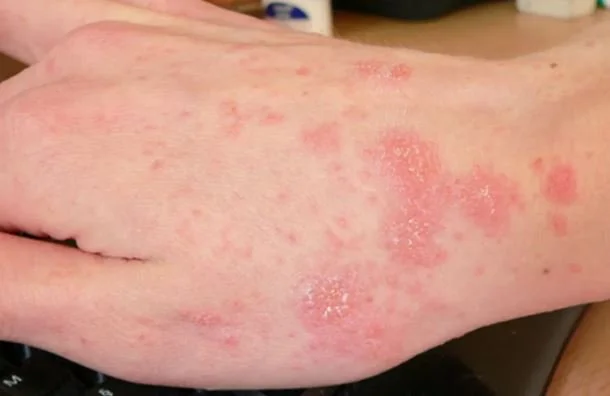A 28 y.o. woman with a six month history of "itching" ; multiple ED visits and treatments including hydroxyzine, famotidine and triamcinolone comes in again with itching.
The ED doctor notes there has never been any rash and decides to do a more thorough evaluation
What did he find?
Our pt was seen 10/25/21, 1/12/22, 1/26/22, 2/18/22 for pruritus and no rash is noted; just scratches that were caused by the patient. She was unresponsive to famotidine , hydroxyzine, triamcinolone. She received a CXR in the ED and the diagnosis of an anterior mediastinal mass was made.
SKIN CAUSES OF PRURITUS
Most pruritus is caused by a primary skin problem with dry skin being the number one cause. The sensation of itching is transmitted through unmyelinated C nociceptive neurons with endings in the dermoepidermal junction. Activators of these nerves include histamine, serotonin, bradykinin, tryptase and substance P. Opiod mu receptors increase the sensation of pruritus.
Pruritus is commonly associated with a skin disorder such as dry skin, atopic dermatitis, urticarial , drug eruption, insect bite, mastocytosis , dermatitis herpetiformis or pemphigoid.
prurigo nodularis is a result of scratching not a primary skin lesion
SYSTEMIC CAUSES OF PRURITUS
Renal pruritus occurs in chronic renal failure. Initially it was thought to be caused by uremia but because it does not occur in acute renal failure so other substances are thought to be involved like circulating histamine in dialysis patients.
Liver disease-Elevated levels of bile acids cause pruritus in cholestatic jaundice but not in hyperbilirubinemia. Cholestatic pruritus can occur in pregnancy.
Hematologic pruritus. Iron deficiency is thought to contribute to pruritus . This is thought to contribute to the severe pruritus experienced in polycythemia vera which is caused by an overproduction of RBCs and relative iron deficiency. It occurs after taking a hot shower and is referred to as “aquagenic ‘ pruritus. This pruritus can be blocked by ASA indicating platelets may also be involved.
Endocrine causes of pruritus include hyperthyroidism because the skin vasodilates and hypothyroidism because of dry skin. Hyperparathyroidism has also been associated with pruritus.
Pruritus and malignancy- Pruritus has been linked to almost every type of malignancy presumably by activating the immune system. 15% of patients with lymphoma present with pruritus. Leukopeptidase and bradykinin are released in Hodgkin’s lymphoma which is thought to be the cause of our patient’s pruritus.
Lichen simplex chronicus is lichenification of the skin due to constant scratching
TAKE HOME POINT- anything that activates the immune system from cancer to infection can cause pruritus . Use antihistamines as first line drugs and consider other causes if they do not work. Most people with systemic disease have fatigue or other symptoms as in our patient who had night sweats. Pruritus occurs in 20% of adults and is seen often in the ED.
Our pt began Adriamycin, Bleomycin, Vinblastine and Dacarbazine treatment (ABVD) for her hodgkin’s .
Scabies also causes severe itching
Furue M, Ulzii D, Vu Y. et al. Pathogenesis of atopic dermatitis: current paradigm. Iran J Immunol 2019 Jun 16(2 ):97-107.
Hampers C, Katz A, Wilson R. et al. Disappearance of “uremic” itching after subtotal parathyroidectomy. N Engl J Med. 1968 Sept 26. 279(13):;695-7.
Phan N, Bernhard J, Luger T, et al. Antipruritic treatment of with systemic mu-opiod receptor antagonists: a review. J Am Acad Dermatol. 2010 Oct 63(4):680-8.



